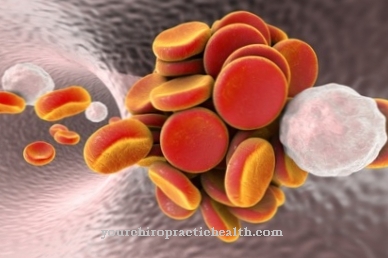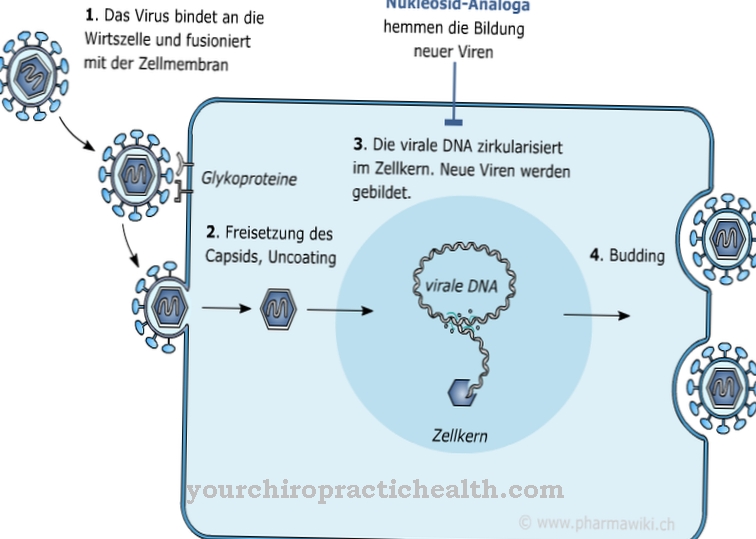Voriconazole is an active ingredient that medical professionals can use to treat fungal infections. It belongs to the group of antimycotics. The effect of the drug is due to a substance that damages the cell wall of the fungus. Possible areas of application are, for example, infections with Aspergillus, Fusarium, Scedosporium and Candida, whereby doctors must consider the numerous potential interactions.
What is voriconazole?
![]()
Voriconazole is an active pharmaceutical ingredient with the molecular formula C16H14F3N5O. The drug belongs to the group of antimycotics because it can be used to treat fungal infections caused by Aspergillus, Fusarium, Scedosporiu or Candida. The use of the active ingredient depends not only on the general indication but also on individual factors.
Patients can take voriconazole either as an infusion or orally (usually as film-coated tablets) depending on the preparation prescribed. Solutions in liquids, for example for infusions and suspensions, usually first have to be mixed from a white powder. In this form, voriconazole can be stored better, among other things. It is commercially available, for example, under the name Vfend® and as a corresponding generic.
Pharmacological effect
Voriconazole works against severe fungal infections by preventing the fungus from building its cell walls. Like plant cells, the cells of a fungus have both a cell wall and a cell membrane. The cell wall gives them stability and has a protective function. In contrast to plants and fungi, humans do not have cell walls around their cells, only a membrane.
To prevent the fungus from building its cell walls, voriconazole intervenes in the pathogen's metabolism and disrupts the enzyme lanosterol-14α-demethylase. This enzyme also exists in living things other than fungi and is involved in the synthesis of various biological molecules. These include certain lipids, vitamins, and steroids; one of those steroids that certain mushrooms require is ergosterol. Lanosterol-14α-demethylase plays an important role in the conversion of the starting material ianosterol into ergosterol, which among other things determines the hardness of the membrane and thereby influences the cell wall structure.
Medical application & use
Doctors primarily prescribe voriconazole for severe fungal infections, for example when organ systems are at risk or attempts to treat other drugs have not been successful. The indications include severe infections with Aspergillus, Candida, Fusarium and Scedosporium.
Aspergillus spores are in large numbers in the air; a healthy person usually breathes them in and out without causing an infection in the body. In particular, drugs that inhibit the immune system (immunosuppressants) can lead to relatively harmless spores, such as those of the Aspergillus, leading to severe infections.
In many cases, one of the many subspecies of the fungus first attacks the lungs, settles in the tissue and forms a watering can-like neck, to which the fungus owes the name "watering can mold". Aspergillus fumigatus is a particularly common cause of such aspergillosis.In the worst case, the fungal infection can destroy the tissue and spread the fungus throughout the body. The most effective treatment possible is therefore essential. Aspergillosis can also affect the central nervous system, which was a major problem before voriconazole was approved - because not every drug can reach the brain and spinal cord and thereby counteract the spread of Aspergillus. Voriconazole therefore constituted an important milestone in the treatment of aspergillosis of the central nervous system.
Another application example for voriconazole is persistent Candida infections (thrush), the treatment of which with other active substances was unsuccessful. Candida also does not normally pose a major threat to the human organism and lives in or on the human body in a balanced equilibrium with other microorganisms. Disturbances in this equilibrium can lead to the spread of Candida: an opportunistic infection occurs, which often affects several parts of the body at the same time.
Risks & side effects
Common side effects of voriconazole include digestive disorders such as abdominal pain, vomiting, nausea and diarrhea, as well as fever, rash and peripheral edema. Peripheral edema is water retention, for example in the legs, which is noticeable as swelling of the affected tissue.
Neurological and psychiatric symptoms can also manifest themselves as a result of the medication; They include headaches, visual disturbances, drowsiness and drowsiness, but also psychotic symptoms such as hallucinations, confusion, anxiety and depression.
In some cases, voriconazole proves to be toxic to the patient's liver - medicine therefore speaks of hepatotoxicity in this context. Another possible side effect can show up in the electrocardiogram (EKG) if the QT interval, which characterizes the depolarization and repolarization of the heart chambers and lies between two characteristic sections of the EKG waves: between the QRS complex and the T wave, increases .
In addition, voriconazole can interact with numerous other drugs, including anticoagulants, astemizole, barbiturates, benzodiazepines, calcium antagonists, carbamazepine, ciclosporine, cisapride, preparations with St. John's wort, phenytoin, rifabutin, rifampicin, siradolimus and ternacrolimus, ternadolimus.



























